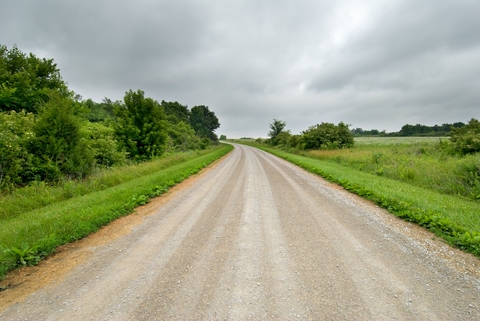
My Eczema Journey

Navigating eczema.
So, you probably noticed already (because you are very sharp) that this post does not exactly fall under my usual three R’s: reading, ‘riting, or ranting.
Nope. Today I will be discussing eczema–primarily hand eczema–so if this is not a concern for you, you may want to skip this post.
But actually, my eczema is related to writing because it affects my hands–bad news for a writer. The other way eczema is related to writing is that writers are researchers. So eczema opened up a whole new sphere for me to research, uh, obsess over.
You know the symptoms–dry, itchy skin; ineffective skin barrier; cracks, fissures, and sores; difficulty sleeping, infection; oozing blisters, and inflammation. I’m probably leaving some out.
I’ve been battling eczema for a couple of years. It started after I began rug making, showing up in the finger that had the most friction with fabric strips. The dye got me. I wasn’t even able to close my finger due to cracking and swelling. Ugh. After that, the eczema spread to encompass both hands and, now, the soles of both feet. I’ve used tubes of prescription steroid ointments and gone through rounds of antibiotics. At one time, I had three simultaneous skin infections. I didn’t even know it was possible to have three infections at one time.
Why am I telling you this? If you’re still reading, you have some interest in eczema. And if you’re like me, you want to promote healing and comfort and avoid steroids. This is a super long post, so I’m listing categories to make navigating easier. Good luck with your eczema journey!
Apparel
Earrings: Many people with eczema have metal allergies, mostly to nickel. If you’re like me–one of the 15ish% of the population with metal allergies–try solid gold, sterling silver, titanium, and niobium. You can’t go wrong with these. If you have a favorite pair of dangle earrings that bothers you, you can buy ear wires of one of the above metals from a jewelry supply store and make a switch pretty easily. I love the colors that titanium and niobium wires come in, and they are not expensive.
Fabrics: Try wearing natural fabrics next to your skin (but not wool). I wear cotton and rayon tops. For pants, I wear bamboo lounge pants every day. They are the most comfortable, silkiest item of clothing ever!
Gloves: To protect my hands and retain moisture, I wear gloves made of bamboo during the day. They are silky, and I find they are thin enough to type and indulge in my rug making hobby. At night when I use heavier creams, I wear cotton gloves to keep the hands moist and to keep my bed linens clean. When washing dishes, I wear rubber gloves with cotton lining. The cotton lining is much more comfortable against your skin than rubber or plastic.
Bathing
The first rule of bathing and showering is to cut down how frequently you bathe. No, you do not need to shower every day. Water reduces essential oils in your skin, which is exactly what an eczematic wants to avoid. A second post-bathing rule is to moisturize within three seconds after finishing. And no, I have not managed to do this. Let me know if you figure out how to accomplish this feat.
Another bathing tip is to mix rice starch into your bath water. I do this every time I bathe. According to the NIH, rice starch repairs skin barrier issues. A beauty consultant I talked to agreed, noting that rice starch is often added to facial creams and cosmetics. I thought I’d be able to find rice starch at an Asian market, but the only source I found was on Amazon.
Diet
Here are a few of my favorite anti-inflammatory food and drinks. Read about more anti-inflammatory food choices here.
Berries: I eat blueberries every day with my yogurt. Yum!
Salmon: the omega 3 fatty acids reduce inflammation. Note: I thought I could just take omega 3 tablets, but a study found that while consuming salmon as a food is beneficial, the supplement has no effect.
Cherry juice: I mix black cherry and tart cherry juice and drink a glass every day at lunch.
Tea: As a pick-up after lunch, I drink green tea. Before bed I drink tea made of whole leaf nettle and peppermint. Both of these plants offer anti-inflammatory and anti-bacterial properties. Chamomile is another good choice for people with eczema. You can read more about tea and eczema here.
Flying with eczema
Proof of eczema. When flying, you should bring some kind of proof that you have eczema. You can print an email from your doctor or bring along a prescription ointment (which you should pack anyway as a flare is not uncommon when traveling. Even happy trips involve some level of stress. I’ve had to scramble more than once to obtain a prescription when out of state). Because of the monkeypox outbreak, people with skin conditions like eczema have been questioned, and one woman with eczema was almost kicked off her flight.
TSA Precheck: Yes, you can get one of these. I didn’t think I would qualify since eczema has robbed me of fingerprints, and fingerprints are a key factor the government uses to check your eligibility for TSA. However, they do make accommodations for people without fingerprints, so, yay! I received approval. It takes a little longer than it does for people with fingerprints (so allow extra time for processing). You can go to Universal Enrollment Services for more information on how to apply. Side note: my husband suggested that since I have no fingerprints, I could take up bank robbery as a new occupation. (Homeland Security–if you’re reading, he was just kidding.)
Mind-numbing itch and pain
It happens. And when it does, you think you might go insane with it. Here’s how to cope. First of all, you’re going to scratch. Only a saint could refrain under these circumstances. To minimize damage to the skin, wear gloves when scratching so your fingernails do not cut you. Better yet, rub instead of scratching. It’s even more preferable to press hard on the offending area. I guess that’s at type of accupressure, and it does work. I’ve also found exercising helps with extreme itch and pain, especially raising my arms vigorously above my heart. And a cold pack is invaluable. I have a flat one in the freezer that I press between my palms. It provides instant relief. Taking an anti-inflammatory pill like aspirin or advil works as well though this takes longer to bring relief.
Skin products
Moisturizing is the most important aspect of managing this disorder since eczema interferes with the skin barrier’s ability to retain moisture. Here are the products I have found helpful. I give my hands the kind of care a supermodel gives her face.
The first thing you need to do is eschew your lotions in favor of oils and creams. Lotions just don’t have enough moisturizing elements for most eczematics. Also, lotions often contain alcohol, which can dry the skin.
Oils: Jojoba oil, coconut oil, and safflower oil moisturize and help to keep skin healthy. I keep a pump bottle of jojoba oil at my desk, and if I feel itchy while working, I pump a few drops on my hands and cover them with bamboo gloves. For those times when you have open cracks, apply an infusion of oil (I made mine with grapeseed oil because of its healing powers) and nettle. Here are instructions on how to make your own nettle infusion. Ironically, fresh nettle leaves sting and burn, but the infusion heals and soothes.
Creams and butters: My daily go-to moisturizer is Shea butter. It’s solid at room temperature, but becomes the consistency of a thick lotion when rubbed into the skin. A commercial product I’ve been happy with is Aveeno Baby Eczema Therapy. This works particularly well on the soles of my feet. Tip: use a small porcelain, wooden, or plastic spoon when scooping out moisturizers to avoid infections (the bane of eczematics).
And now for the game changer: hyaluronic acid. Hyaluronic acid works by binding moisture to skin. I had heard about hyaluronic acid in the past–a product with a price tag of $250. That seemed a bit steep for me, especially since I had no idea if it would work. Then I came across this one by La Roche-Posay for around $35. Twice a day I use this as part of my regimen. I apply hyaluronic acid first, then my moisturizers, and I haven’t had a flare since. One other great thing about this product is that it doesn’t sting even when you have cracks and fissures.
Slugging: yep, you read that correctly. Slugging is a technique in which you apply your favorite moisturizer, then add a layer of petroleum jelly and cover it with gloves or socks. It’s called slugging (I had to look that up) because it resembles slug slime. Mmmm…lovely image.
A word about deodorant. Many eczematics react to commercial deodorants. Fear not, there is a natural solution: a DIY deodorant made of coconut oil and rice starch. It’s super easy to make. Just make a paste of coconut oil and rice starch. I keep mine in a small jar. At first I worried that this formulation would be greasy and runny, but it absorbs right into the skin with no residue. Added bonus: coconut oil and rice starch deodorant is actually good for your skin and gentle on the environment.
Laundry detergent: Many people with eczema have skin sensitivity to laundry products. I use a natural laundry soap called Charlie’s Soap–better for skin and better for the environment.
The three W’s
Years ago a pediatrician told me about the three w’s of eczema: water, wool, weather. Water dries the skin, wool irritates the skin, and weather can aggravate eczema or cause a flare. Most people who have weather-related flares are triggered by cold weather. In my case, it’s hot weather that does it. I know I feel stressed in hot weather, and stress definitely contributes to eczema.
Weirdly good news
And now for some weirdly good news. The only eczema benefit I’ve learned about is that eczematics are 23% less likely to contract Covid. We’ll take any good news, right?
So, readers, there you have my take on eczema. This is a super long post, but I hope you found it a little helpful. What tips do you like that I left out? Feel free to comment with any questions, and I’ll try my best to answer. Here’s one question I can’t figure out: Why isn’t eczema spelled exema? Let me know if you know the answer to that one!
2 thoughts on “My Eczema Journey”
Hi Deb, thanks for the tips. I’m definitely going to try the La Roche-Posay. My kids and I all get flare ups at times and we tend to use hydrocortisone cream and cake on the petroleum. It’s been awkward to explain a couple times that I don’t have the kids bathe every day, but unfortunately they break out more if they do. It’s no fun, but I hope you’re doing well!
Thanks for the good wishes, Allegra! For bad flares I definitely use the stronger stuff like hydrocortisone or prescription meds. Let me know if La Roche-Posay works for you. Good thoughts for your eczema journey!